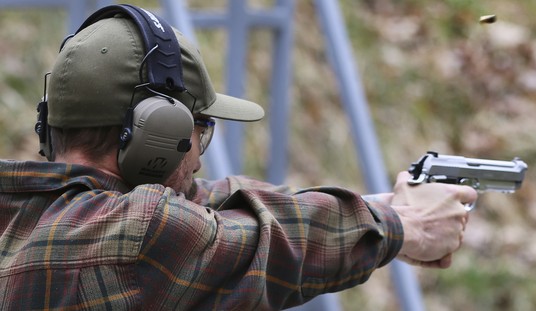A better question might actually be how much can we trust crime statistics, given that we’re starting to see some wildly divergent data depending on what report you look at.
We all know that crime is the most often used excuse by anti-gunners to promote or implement their agenda, including New Mexico Gov. Michelle Lujan Grisham’s recent attempt to suspend the right to carry by declaring “gun violence” a public health emergency in Albuquerque and Bernalillo County. In 2021, when the FBI’s Uniform Crime Report for 2020 was released showing a 30% increase in the number of homicides, there was no shortage of anti-gun activists proclaiming that the spike was the result of the historic increase in the number of guns sold that year. For a movement based on the premise that more guns equals more crime, that statistic was a gift.
While the FBI’s report was widely touted by anti-gunners, almost no one paid any attention to the National Crime Victimization Survey for 2020, which found that violent victimizations declined by 22% that year; the biggest one-year drop since the Bureau of Justice Statistics began compiling victim information according to analyst Leonard Sipes. It seems odd that murders soared while other violent crimes plummeted, but now we’re seeing a swing in the opposite direction in the latest NCVS, which reports that violent victimizations involving firearms nearly doubled from 2021 to 2022, while other reports indicate crime leveling off or even declining.
Crime analyst Jeff Asher noted the discrepancy on his Substack recently, writing that he “has a little trouble” accepting the NCVS figures given what he’s seeing from other available reporting.
It sounds like NCVS is saying there was a huge surge in shootings last year while the FBI’s NIBRS data is likely to say the opposite.
But “firearm victimizations” does not inherently equate to shootings. Based on the above definition, a simple assault with a firearm present would count as a “firearm victimization.” As always, it is important to be careful with squishier crime definitions.
There are two known facts and two assumptions that give me pause when considering the meaning of NCVS’s measurement of “firearm victimizations.”
Fact 1: There is good evidence that shootings fell in 2022 in most big cities with available data.
Fact 2: The big city data matches what we see in Gun Violence Archive data which points to a 5 percent drop in fatal and non-fatal shooting victims (not counting suicides).
Assumption 1: The vast majority of shooting victims are successfully reported to the police. Perhaps some shooting victims don’t receive a police report, but that figure is likely to be pretty low.
Assumption 2: There is unlikely to be a huge increase in shootings or firearm discharges without a measurable increase in reported fatal and non-fatal shootings.
So, while NCVS points to a surge in firearm victimizations, this does not equate to a surge in shootings in light of the other evidence which points to a decline.
Asher suggests two possibilities to account for the NCVS’s wonky data: first, that more assailants possessed guns but didn’t actually use them to assault a victim, and secondly that COVID played havoc with the collection of data for the NCVS in 2020 and 2021, skewing the results in a downward direction instead of picking up on an increasing amount of guns being used in violent assaults.
There may be something to Asher’s hypotheses, but I don’t think those factors alone can account for the 2022 NCVS showing an incredible 96% increase in the number of violent victimizations involving firearms when most of the other available evidence shows a drop in shootings. Sipes notes that this isn’t the first time the NCVS has diverged from other reporting, and like Asher, he has some theories about what might be going on but no solid answer to explain the discrepancy.
Yes, there have been previous big increases in crime per the National Crime Victimization Survey. From 2015 to 2018, the total number of violent victimizations increased by 28% but after that, violence either declined or was mostly flat. Serious violent crime also increased.
So it seems that we have a paradox, significantly rising violence and serious violence in 2022 per the National Crime Victimization Survey and mostly decreasing violent crime in 2023 based on police city dashboards while recognizing that only 41.5 percent of violent crimes are reported to law enforcement.
It’s possible that “overall” violence is up but “reported” violence is down. There are huge differences in the numbers compiled by the National Crime Victimization Survey compared to crimes reported to law enforcement. Generally speaking, the larger the numbers analyzed, the more accurate the results.
We still await the yearly report from the FBI (crimes reported to law enforcement) and no one knows what they (and their depleted numbers of participating agencies) will say.
Understanding crime in the United States has never been more confusing.
That last line is the real takeaway. Just parsing through the crime statistics is hard enough, especially when you’re looking at data on a national level and not city-level reporting on things like homicide. But anti-gunners can pick and choose which statistics best fit their agenda, and I wouldn’t be surprised at all to see the reported rise in gun-related victimizations outlined in the NCVS get picked up by the gun control lobby going forward, even if those stats don’t match up to reality.
For what it’s worth, I think the crime spike in 2020 was a real phenomenon, but it had far more to do with the closure of courts and the emptying of jails along with the riots and civil unrest that we saw as opposed to the historic increase in gun sales. And if more guns really did equal more crime, we wouldn’t be witnessing a dramatic plunge in homicides in many cities this year (including Albuquerque, incidentally), because all those recently purchased guns are still around. The truth is that no matter what data you look at, either the FBI Uniform Crime Report or the National Crime Victimization Survey, violent crime is far less commonplace than it was 30 years ago when we had fewer guns and more gun control laws in place.









Join the conversation as a VIP Member